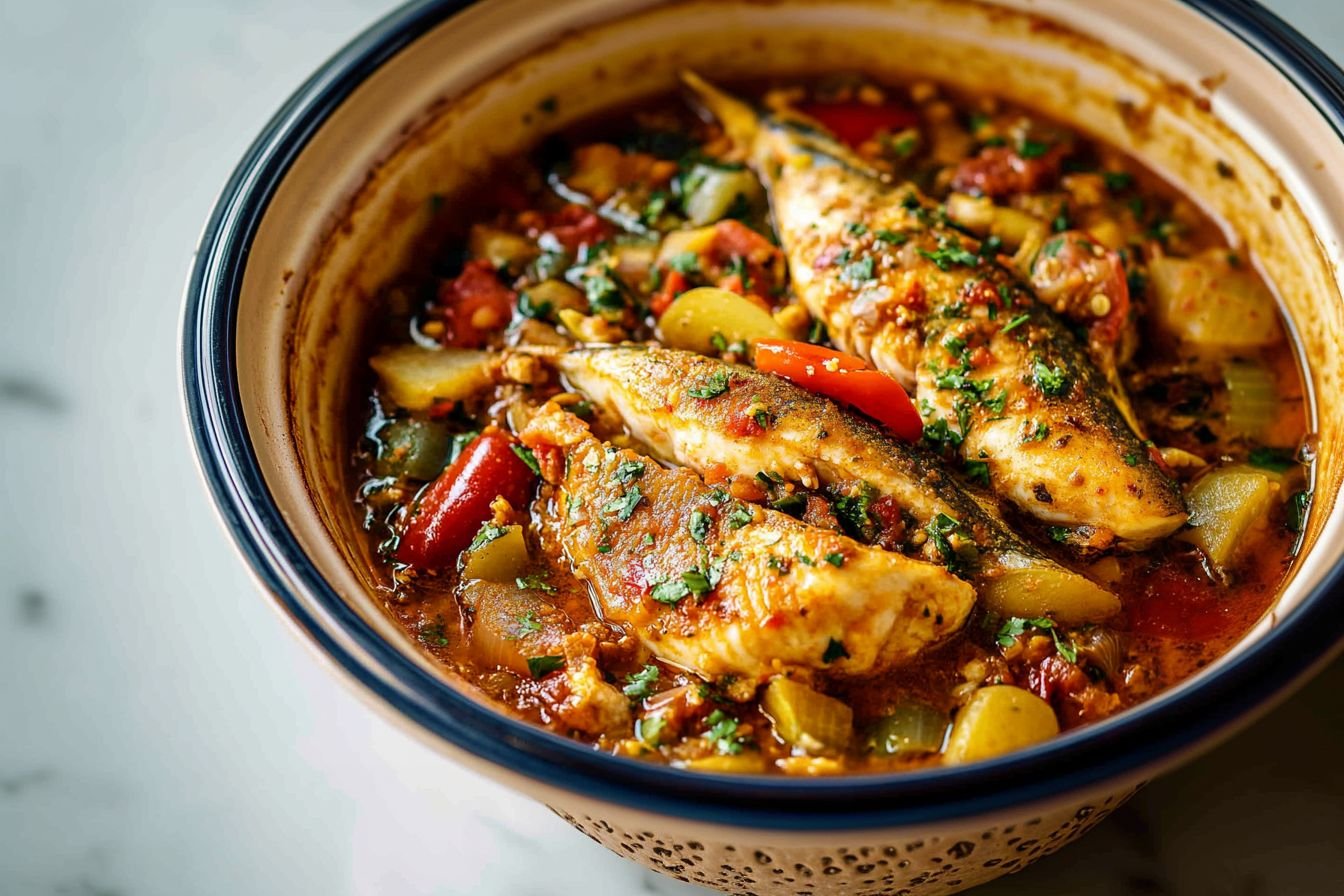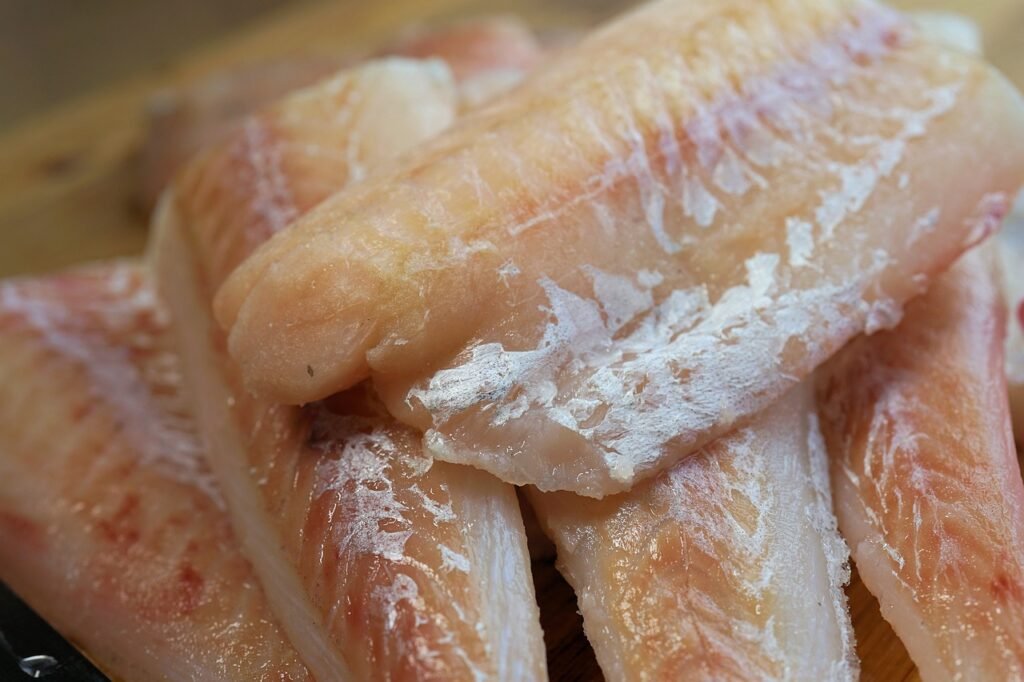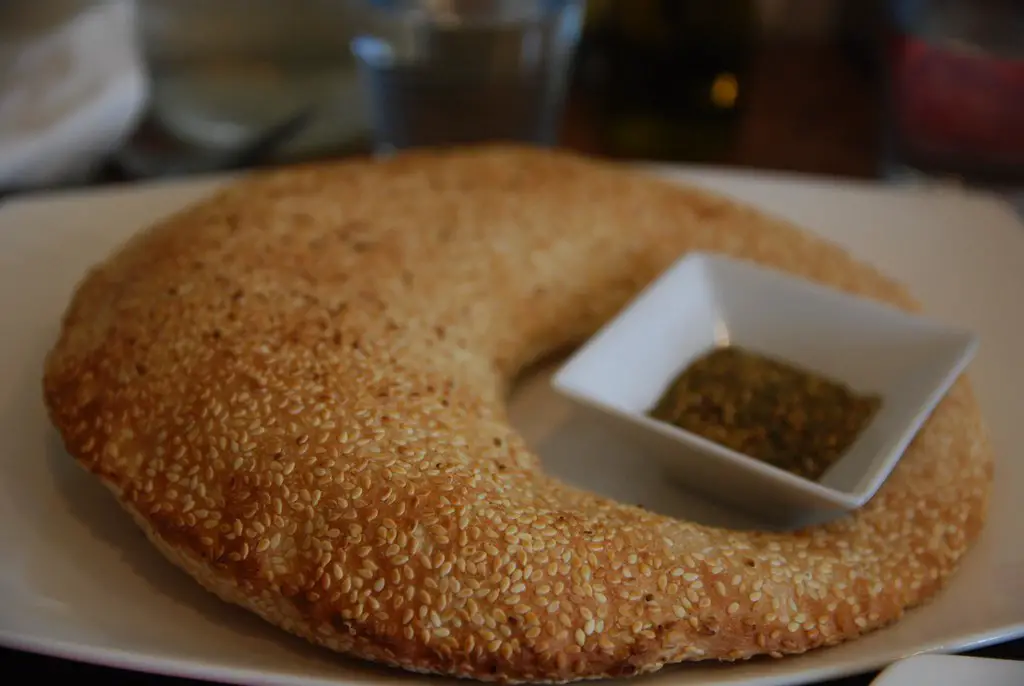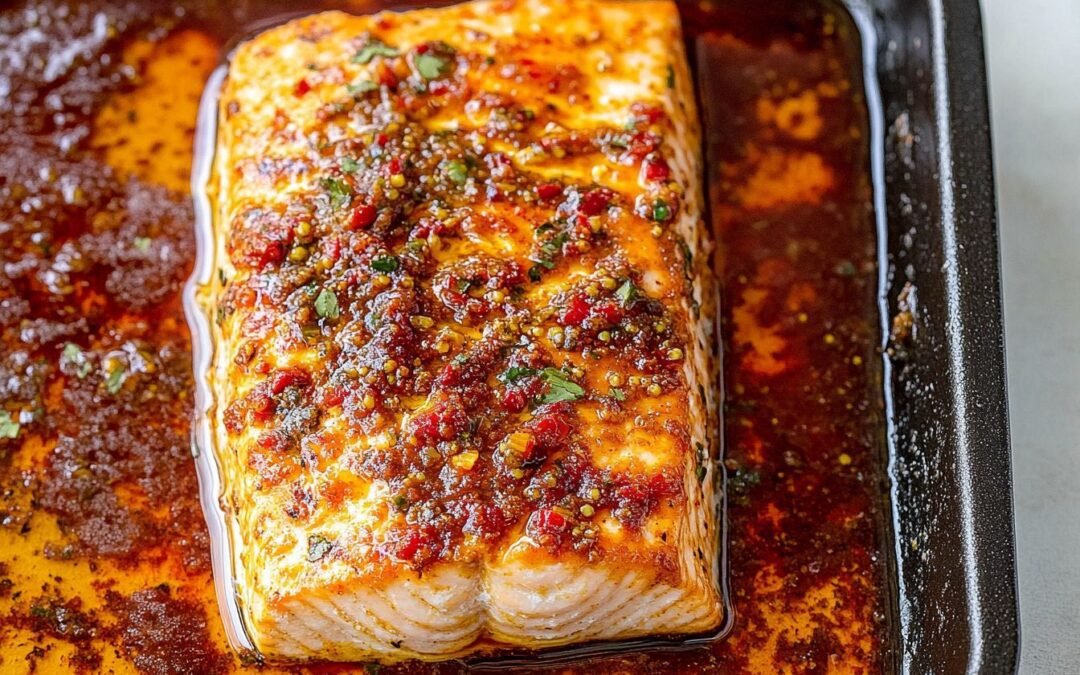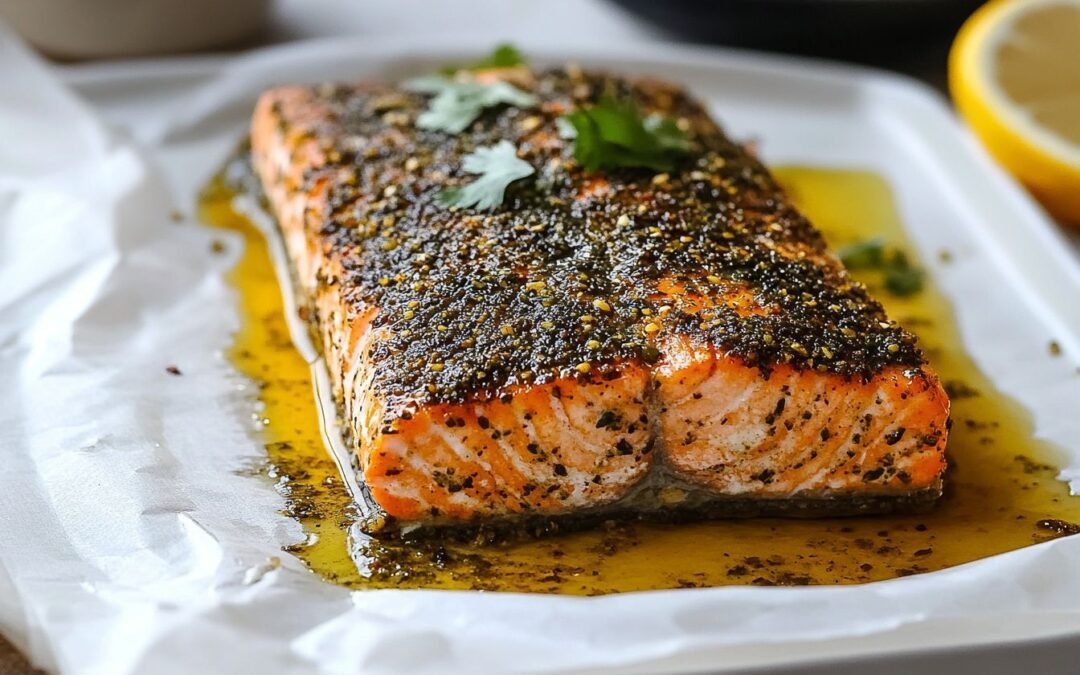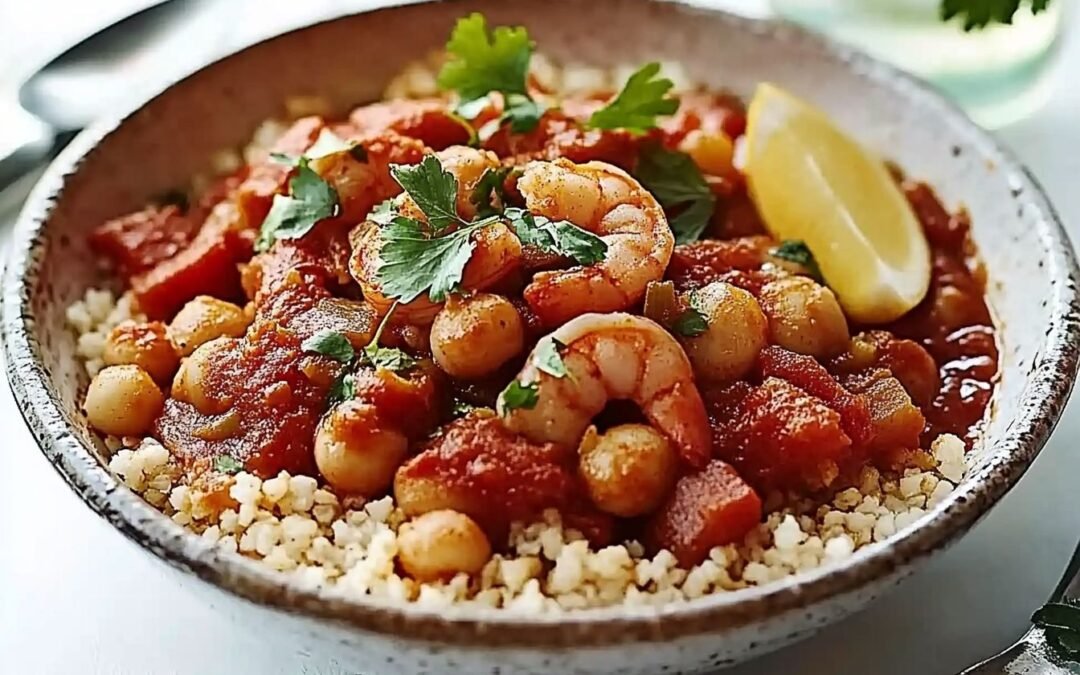Fish tagine brings flavor and warmth to the table, making it a perfect dish for any occasion. To create this delicious meal, you’ll need olive oil, onion, bell peppers, smoked paprika, ground cumin, turmeric, coriander seeds, chili pepper, tomato, garlic, harissa, chickpeas, water, bouillon powder, cilantro, cod fillets, pepper, and salt. Each ingredient layers together to craft a deliciously aromatic stew that I can’t resist sharing.
Combining spices and fresh vegetables enhances the fish and provides a hearty experience that warms the soul. Exploring the rich culinary traditions of North Africa through fish tagine excites me, and I believe you’ll enjoy this journey too.
History of Fish Tagine
Fish tagine has roots in North African cuisine, particularly in Morocco. With its conical lid, the tagine pot has been used for centuries to slow-cook meals, blending flavors and preserving moisture.
Historically, the coastal regions of Morocco relied on fishing. They prepared fish with local spices, vegetables, and preserved lemons, showcasing the abundance of the sea. These recipes evolved, incorporating various cultural influences.
The Berber people, an indigenous group in North Africa, played a significant role in developing the tagine method. They often featured fish in their meals, combining it with aromatic herbs and spices unique to the region.
As trade routes expanded, new ingredients arrived, enhancing fish tagine. The introduction of spices like saffron and cumin added depth to the flavors. Additionally, with the rise of tourism in the 20th century, the dish gained international recognition.
Ingredients:
- 4 frozen cod fillets (or any firm white fish)
- 2 tbsp of olive oil
- 1 sliced medium onion
- 4 sliced bell peppers (green, red, and yellow)
- 2 tsp of smoked paprika
- 1 tbsp of ground cumin
- ½ tsp of ground turmeric
- ½ tsp of lightly crushed coriander seeds
- ¼ tsp of chili pepper or cayenne (optional)
- 1 skinned and diced medium tomato
- 1 finely diced head of garlic
- 1-2 tbsp of harissa
- 1 small can of chickpeas (approx. 1 cup)
- 1 cup of water
- 1 tsp of bouillon powder
- 1 roughly chopped bunch of cilantro
- A pinch of ground black pepper
- Salt (to taste)
How to make fish tagine?
- Begin by warming your tagine over low heat. Once warm, increase the heat to medium-high. For other pots, start directly on medium-high heat.
- Sauté onions in 2 tablespoons (or more) of olive oil until translucent, then add bell peppers and cook covered for 3 minutes. Stir in your favorite spices, diced tomatoes, and minced garlic. Cover and simmer for 3-4 minutes, adding water if needed.
- Incorporate chickpeas and bouillon powder, stir, and add water. Cover and simmer for 10 minutes.
- Uncover, taste the sauce, and add cilantro. Place the fish on top, cover, and simmer for 7 minutes. Check the fish; it should be soft. Add sauce, move chickpeas aside, cover, and simmer for another 4 minutes. Your dish is ready to be enjoyed.
Nutritional Information
| Nutrient | Amount per serving (Approx.) |
|---|---|
| Calories | 350-400 |
| Protein | 47 grams |
| Fat | 12 grams |
| Carbohydrates | 22 grams |
| Fiber | 6 grams |
| Cholesterol | 99 mg |
| Sugar | 4 grams |
Pairing and Serving Suggestions
Side Dishes
- Couscous: Light and fluffy, it complements the spices perfectly.
- Crusty Bread: Great for dipping into the tagine sauce.
- Steamed Vegetables: Choices like broccoli or carrots add freshness.
Garnishes
- Chopped Cilantro: Adds an aromatic touch.
- Lemon Wedges: A squeeze of lemon brightens the flavors.
- Olives: Provide a salty contrast to the dish.
Beverage Pairings
I recommend the following beverages to enhance your meal:
- White Wine: A crisp Sauvignon Blanc works wonderfully.
- Mint Tea: A traditional choice that refreshes the palate.
Storing and Reheating
Storing
- Refrigeration: Place the leftovers in an airtight container. It will last 2-3 days in the fridge.
- Freezing: I freeze the tagine for longer storage. Use freezer-safe containers or bags to prevent freezer burn. It’s best used within 1-2 months.
Reheating
- Stovetop: I warm it gently in a pot over low heat. Stir occasionally to prevent sticking.
- Microwave: I use a microwave-safe dish and cover it with a lid. I heat in short intervals, stirring in between to ensure even warming.
Tip: Adding a splash of water or broth while reheating keeps the dish moist. Enjoying the leftovers can be just as delightful as the first serving!
Common Mistakes to Avoid
- Choosing the Wrong Fish: Opt for firm, white fish such as cod or halibut. Avoid oily fish like salmon, as they can overpower the spices.
- Overcooking the Fish: Fish cooks quickly, so I always watch it. Overcooking leads to a dry texture. Aim for about 10-15 minutes, depending on the thickness.
- Ignoring Fresh Ingredients: Using fresh herbs and vegetables elevates the dish. I prefer fresh cilantro and bell peppers over dried alternatives.
- Not Balancing Flavors: I balance sweet, sour, and savory elements. Adding a bit of honey or dried fruit can perfectly complement the spices.
- Forgetting the Accompaniment: A good side can make a meal complete. I often serve it with couscous or a fresh salad to enhance the dining experience.
Conclusion
Preparing fish tagine is enjoyable and brings vibrant flavors and rich traditions to my kitchen. combining fresh fish, aromatic spices, and colorful veggies creates a dish that pleases both the eye and palate.
I appreciate how flexible the recipe can be. You can adjust the ingredients based on what’s in season or your taste. My favorite additions include olives and preserved lemons for that authentic Moroccan flavor.
Serving it with couscous or crusty bread enhances the meal. It allows everyone to savor the savory sauce that results from slow cooking.
This dish not only nourishes but also invites sharing and conversation. Whether for a casual family dinner or a special gathering, fish tagine always impresses.
As you’ve read above, crusty bread perfectly accompanies this dish.
Get that kaak bread recipe now (by clicking the image below):
